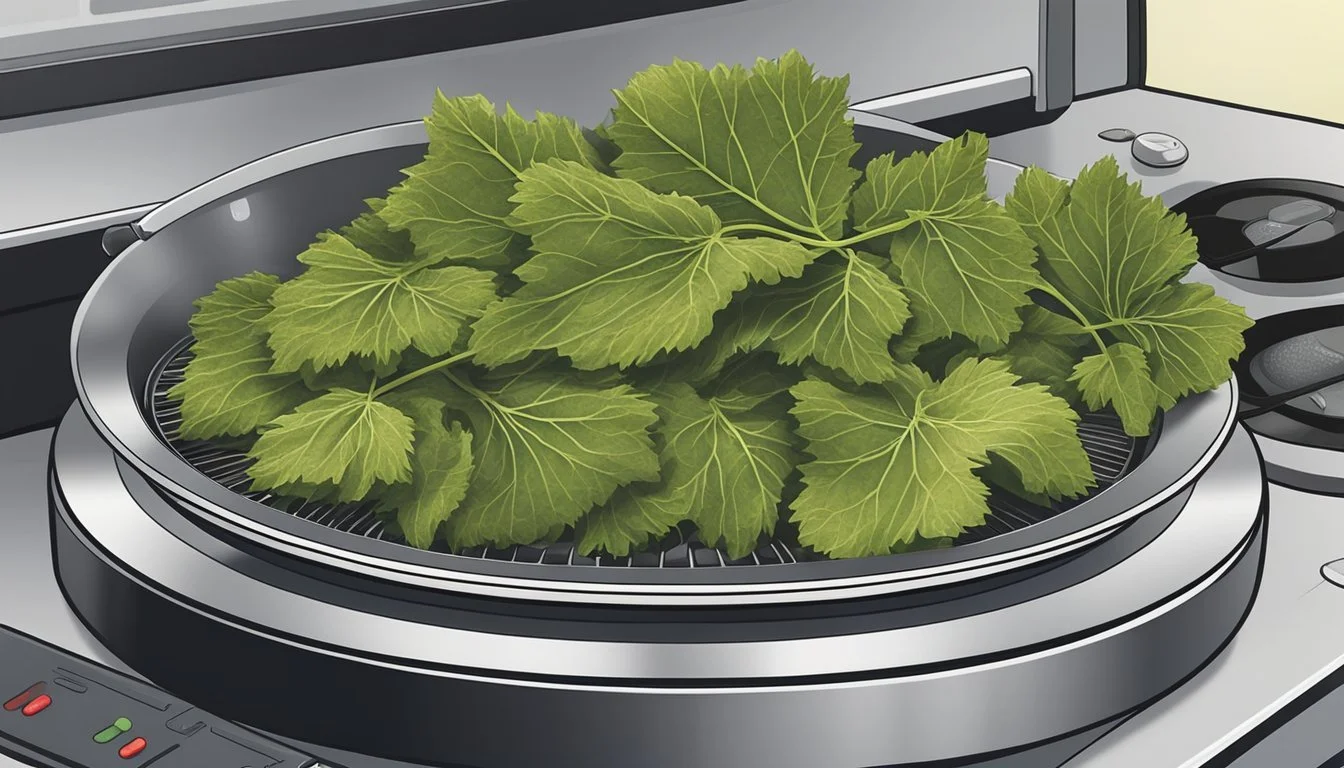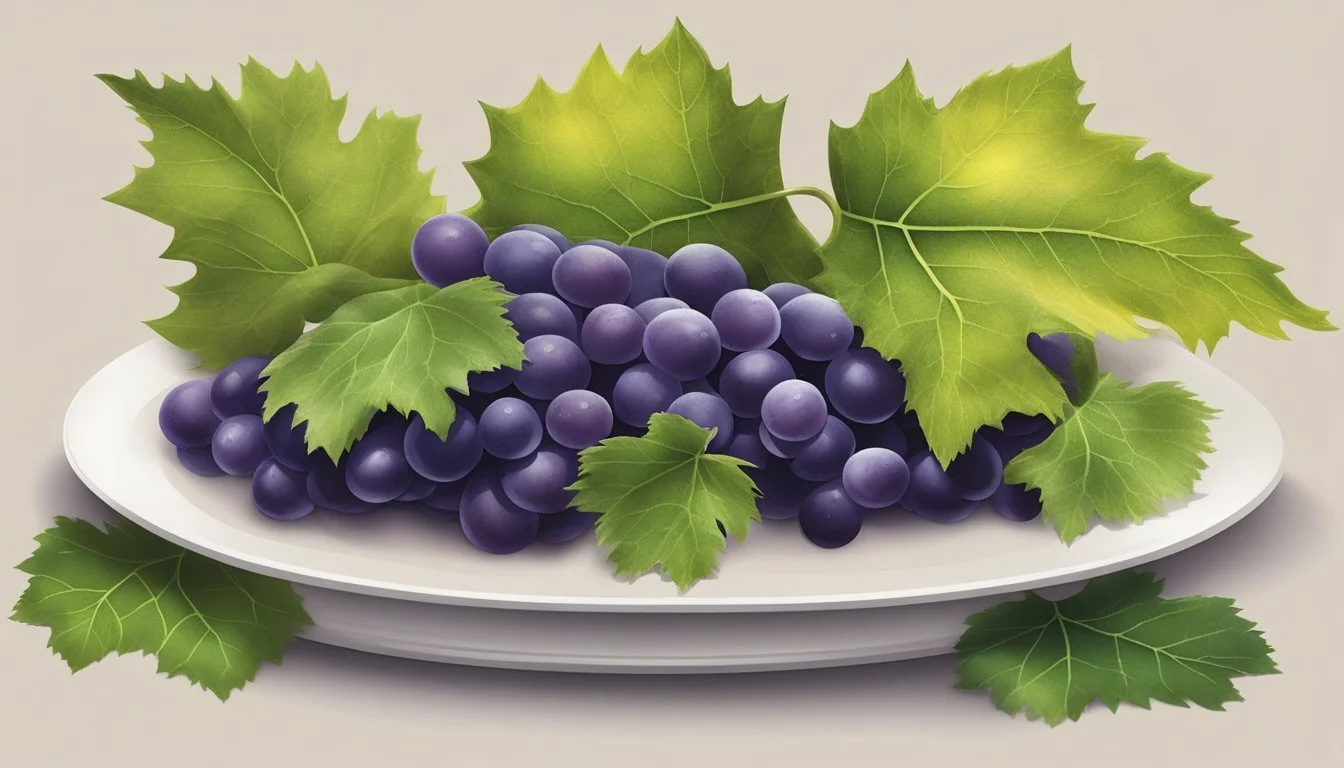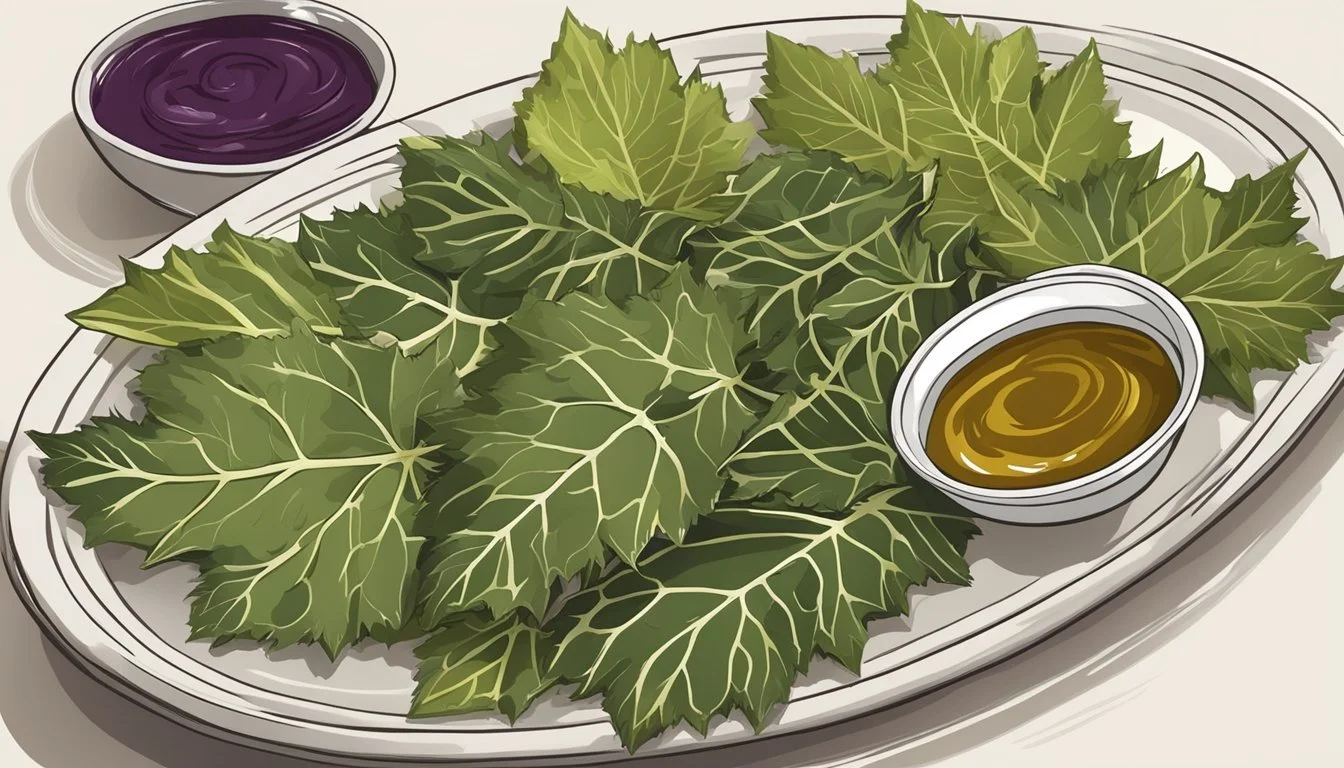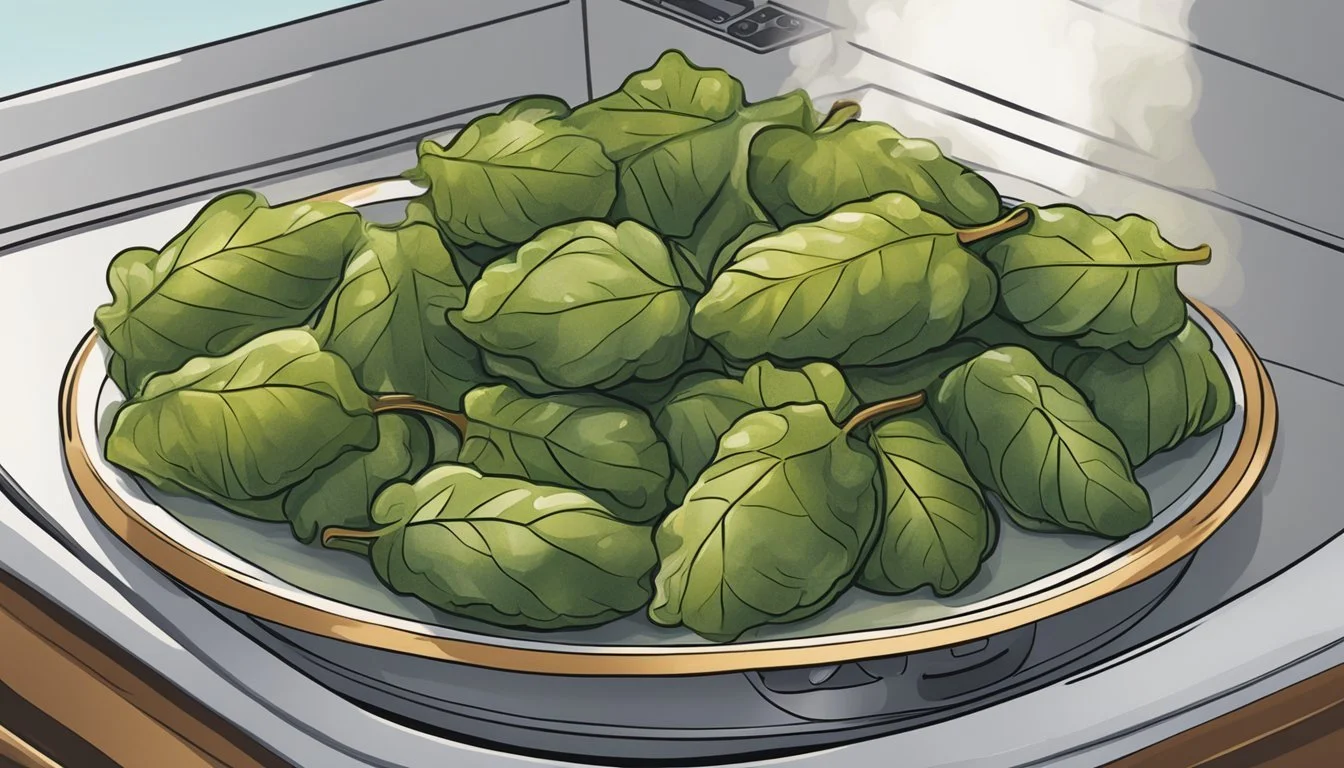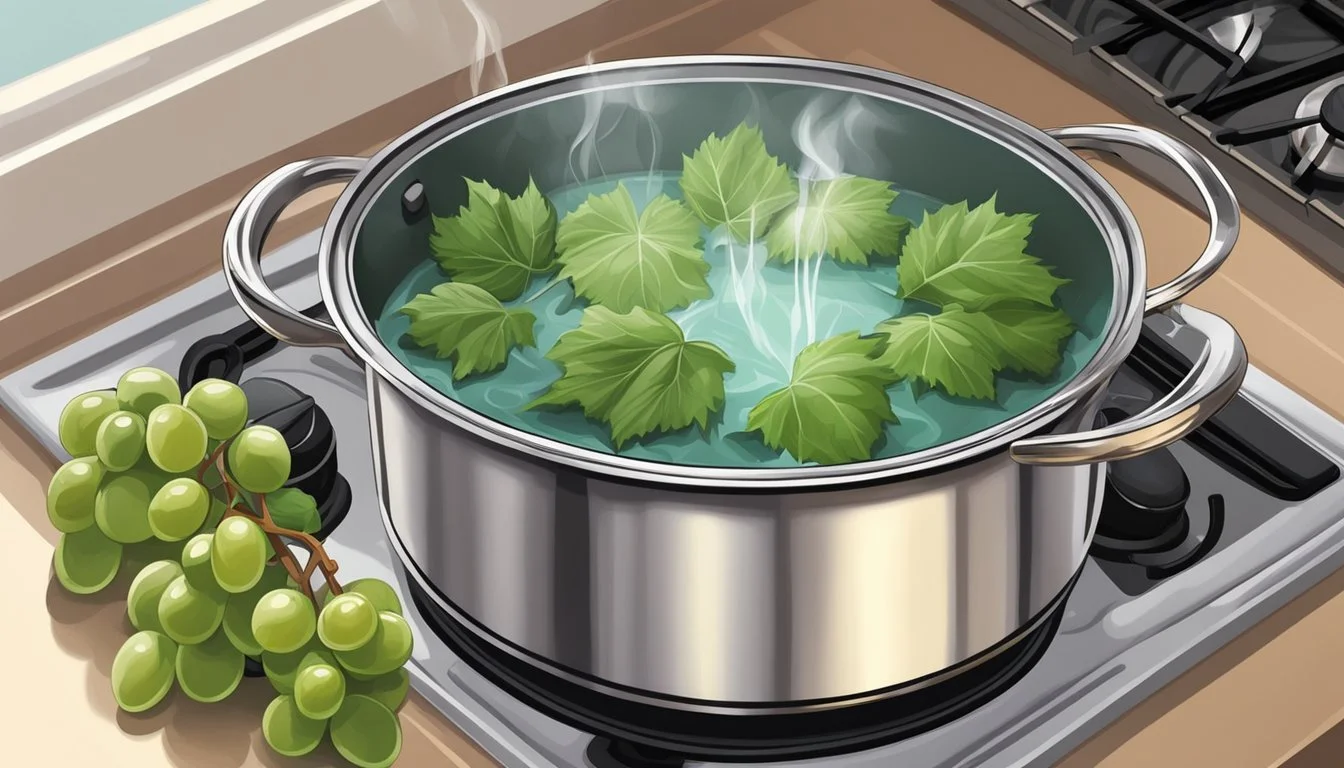Best Way to Reheat Stuffed Grape Leaves
Ensuring Flavor and Tenderness
Stuffed grape leaves, a staple in Mediterranean and Middle Eastern cuisine, are cherished for their tender texture and tangy taste. These delectable parcels are often made ahead of time and require reheating, which presents a challenge to maintain their distinctive qualities. Ensuring that these delicacies are warmed properly is key to preserving their flavor and preventing them from becoming too dry or soggy.
The secret to reheating stuffed grape leaves lies in choosing the right method to match their delicate nature. A gentle heat source is indispensable to revive the rolls without altering their signature texture or diminishing their zestful flavor. The goal is to reach the ideal temperature where the leaves are heated through while the filling remains moist and flavorsome.
Understanding Stuffed Grape Leaves
Stuffed grape leaves are a quintessential Mediterranean dish, embraced by various cultures across the Middle East. Known as dolma or dolmades, these savory parcels typically consist of grape leaves as the wrapping, enveloping a filling that may range from vegetarian to meat-heavy mixtures.
The flavors of stuffed grape leaves are tangy and robust, resulting from a blend of herbs, spices, and often a touch of lemon. Standard fillings include rice, combined with fresh herbs like mint, parsley, and dill. The aromatic profile of the dish is further enhanced with spices such as black pepper, allspice, and kosher salt.
For a more substantial version, ground beef or lamb can be incorporated into the filling. This non-vegetarian option remains true to the dish's origins in Mediterranean and Middle Eastern cuisine. The presence of basmati rice in the mix adds a nutty flavor and a unique texture that complements the softness of the cooked leaf.
Extra virgin olive oil is the fat of choice, generously employed to impart richness and moisture, while pine nuts may be included for a subtle crunch. Aromatic sweet onions are often sautéed until tender and added to the mixture, deepening the flavor profile.
As for the grape leaves themselves, they should be fresh or adequately preserved to ensure that they remain pliable enough to wrap around the filling without tearing. Before serving, a drizzle of lemon juice or a garnish of fresh herbs can be added to refresh the palate and provide a bright contrast to the hearty filling within.
Essentials of Reheating
Reheating stuffed grape leaves carefully is crucial to maintain their tender texture and tangy flavor. The process should ensure the leaves reach the correct internal temperature for food safety without compromising their quality.
Importance of Texture Retention
Stuffed grape leaves are cherished for their delicate texture which can easily become soggy or overly dry if reheated improperly. To retain the desired tenderness:
Oven Method: Preheat the oven to 350°F (175°C). Arrange leaves in a single layer in a baking dish, and add a small amount of water or broth to prevent drying. Cover with foil to keep them moist.
Stovetop Method: For leaves that are frozen or refrigerated, place them in a single layer in a pan, cover tightly with a lid, and cook for 5-7 minutes, checking and gently shaking the pan for even heating.
Always ensure that the leaves are reheated gently and avoid high temperatures which can toughen the leaves.
Flavor Preservation
To maintain the distinctive tangy flavor of stuffed grape leaves during reheating:
Microwave Technique: Sprinkle water or cover with a damp paper towel and heat on high for 1-2 minutes per dolma. Adjust timing based on microwave wattage.
Addition of Liquids: Use of water, broth, or lemon juice can help preserve and even enhance the flavor, especially when using the oven method.
It is essential to reach an internal temperature of 165°F (74°C) to ensure the food is safe to consume while also preserving its taste. Reheating should be done until the grape leaves are just heated through, as overcooking can lead to flavor loss.
Preparation Steps Before Reheating
Proper preparation of stuffed grape leaves before reheating is crucial to maintaining their quality. Whether they are a main course or appetizer, ensuring that the leaves are stored correctly and have the necessary ingredients on hand can make a significant difference in taste and texture.
Gathering Necessary Ingredients
Before reheating stuffed grape leaves, one should ensure the availability of the following ingredients and items to preserve moisture and flavor:
Water or Broth: A small amount to add to the dish when reheating to prevent dryness.
Olive Oil: A light drizzle can help retain the richness of the leaves.
Aluminum Foil: If using an oven, this will be needed to cover the dish.
Pre-Reheat Storage Tips
How leftovers are stored before reheating plays a significant role in preserving their taste and texture:
Refrigerator Storage: Stuffed grape leaves should be kept in an airtight container in the refrigerator to maintain freshness.
Freezing: If the leaves are frozen, ensuring they are wrapped tightly with aluminum foil or placed in a sealed container will prevent freezer burn.
By following these steps, the quality of stuffed grape leaves can be preserved, ensuring they remain a delicious appetizer or main course when reheated.
Reheating Methods Detailed
Reheating stuffed grape leaves properly is essential to preserve their tenderness and tanginess. The three effective methods are using a stovetop, an oven, or a microwave.
Stovetop Method
To maintain moisture and prevent sticking, one can opt for the stovetop method. Stovetop Reheating Steps:
Place a shallow pan over medium heat.
Optionally, add a splash of olive oil or broth.
Arrange the grape leaves in a single layer in the pan.
Cover the pan securely and heat for 5-7 minutes.
Adding lemon juice towards the end of reheating can enhance the flavor.
Oven Method
The oven method is excellent for achieving a texture close to the original. Oven Reheating Steps:
Preheat the oven to 350°F (175°C).
In a baking dish, place the grape leaves in a single layer.
Introduce a small amount of water or broth to the dish.
Heat until warmed through, checking periodically.
Lining the baking dish with parchment paper can prevent sticking and make cleanup easier.
Microwave Method
For a quick reheating option, the microwave can be used, though it may slightly alter the texture. Microwave Reheating Steps:
Place the grape leaves in a microwave-safe dish.
Cover them with a damp paper towel.
Microwave on medium power in 30-second intervals, checking for even heating.
Adding a teaspoon of lemon juice or broth before microwaving can help retain the flavor and moisture.
Supplementary Ingredients and Pairings
When reheating stuffed grape leaves, one can greatly enhance their flavor and create a more cohesive dining experience with the right supplementary ingredients and pairings.
Enhancing with Dressings and Sauces
Dressings and sauces can add depth and complement the tender tanginess of grape leaves. Here is a list of suggested enhancements:
Tzatziki Sauce: A creamy blend of yogurt, cucumber, and garlic complements the grape leaves' flavor.
Lemon and Olive Oil: Simply drizzle over the top for added brightness and richness.
Yogurt Dip: Plain yogurt seasoned with herbs can provide a cooling contrast.
Butter with Herbs: A melted mixture to brush on top post-reheat for extra decadence.
Complementary Side Dishes
The right side dishes can create a well-rounded meal. Consider these options:
Salad:
Greek Salad: A classic pairing for a complete Mediterranean meal.
Simple Green Salad: Offers a fresh, crisp balance to the grape leaves' richness.
Breads:
Flatbread: Perfect for scooping up extra sauce or dip.
Pita Bread: A soft and fluffy option for those who prefer a more traditional pairing.
Dips:
Hummus: Adds a creamy texture and pairs well with the stuffed grape leaves and flatbread.
Olive Tapenade: A tangy and savory condiment that adds a burst of flavor.
Seasonings such as salt and pepper can also be used sparingly to enhance the taste of both grape leaves and their pairings.
Post-Reheat Presentation Tips
When reheating stuffed grape leaves, one ensures the dish's taste and texture are preserved, but how it's presented is equally important for an enjoyable eating experience. Follow these tips to impress with both flavor and presentation.
Serving Suggestions
Stuffed grape leaves can be displayed appealingly on a serving platter to enhance the overall dining experience. A figure-eight or spiral arrangement showcases uniformity and artistry. It is beneficial to provide:
Serving Platter: Arrange the grape leaves neatly, either in straight rows or a spiral pattern for visual appeal.
Side Accompaniments: Serve with a side of thick, creamy yogurt or a light tomato sauce for added taste and texture.
Garnishing Techniques
The right garnish not only adds to the visual appeal of the dish but can also enhance its flavor. Consider these options:
Fresh Herbs: Sprinkle finely chopped dill, parsley, or fresh mint for a refreshing contrast against the warm grape leaves.
Citrus: Adding a few wedges of lemon for guests to squeeze onto their dish introduces a zesty tang.
Nuts: A light scattering of toasted pine nuts provides a delightful crunch and nutty undertone.
Olive Oil: A drizzle of extra virgin olive oil just before serving will give the dish a glossy finish and an extra layer of flavor.
Storage and Food Safety
Utilizing correct storage techniques ensures the safety and quality of leftover stuffed grape leaves. Proper handling can prevent bacterial growth and maintain the distinctive tangy and tender qualities of the dish.
Proper Leftover Handling
To preserve stuffed grape leaves, one should refrigerate them within two hours of serving. They must be stored in an airtight container to prevent the ingress of moisture and other contaminants. For jarred grape leaves, always use clean utensils to extract them from the brine to prevent introducing bacteria to the remaining leaves. Here are the key steps:
Cooling Down: Allow leftovers to reach room temperature.
Packaging: Transfer to an airtight container.
Refrigeration: Keep refrigerated at 40°F (4°C) or below.
Avoiding Food-Borne Illness
To mitigate the risk of food-borne illnesses, maintaining optimal food safety conditions is crucial. Leftovers should be consumed within 3-5 days to ensure safety and taste. Additionally, reheating should be done thoroughly to an internal temperature of 165°F (74°C) to kill any potential bacteria. The specifics include:
Bacterial Growth: High-risk if food is left out over two hours at room temperature.
Reheating: Ensure even and adequate reheating to eliminate bacteria.
Jarred Grape Leaves: If using them, the brine should be intact and the jar must be sealed properly until use.
Additional Tips for Best Results
To reheat stuffed grape leaves effectively, one should not only focus on the method of reheating but also on the quality of the ingredients used and the conditions under which the reheating is performed.
Using Quality Ingredients
To ensure that the reheated stuffed grape leaves maintain their tenderness and tanginess, using high-quality ingredients is crucial. Olive oil, known for its health benefits and flavor, should be of the best quality possible. An Orlando brand olive oil with its fresh, aromatic character can be an excellent choice for adding a hint of richness to the dish. When selecting grape leaves, either fresh or preserved, one should always look for signs of freshness and quality.
Olive Oil: Choose a high-grade, extra-virgin olive oil for an authentic olive drizzle.
Grape Leaves: Preferably fresh for the best texture, but if convenience dictates, select a well-reviewed preserved variety.
Optimal Reheating Conditions
Creating the right environment for reheating can make a significant difference in the final outcome of your stuffed grape leaves.
Temperature: Heat gently and gradually to avoid drying out or toughening the leaves.
Moisture: Add a splash of water or broth to the dish to keep the leaves moist. A minimal amount will suffice to maintain the desired tenderness without making the dish soggy.
Cover: When reheating, cover the leaves to trap steam, which helps to heat them evenly without losing moisture.
Boldness in flavors can be preserved by ensuring the leaves are warmed through but not overcooked, safeguarding their signature tangy taste.
Troubleshooting Common Issues
When reheating stuffed grape leaves, maintaining the perfect texture and flavor is crucial. This section addresses some common complications and offers practical solutions.
Adjusting for Soggy Leaves
If one notices that the grape leaves have become soggy, it might be due to excess moisture. To prevent sogginess, one should ensure that any added water is minimal. In the oven, adding just a thin layer of broth at the bottom of the baking dish is enough. For microwaving, covering the sarma with a damp paper towel rather than a wet one can mitigate excess moisture whilst keeping the leaves tender.
Dealing with Uneven Heating
Uneven heating can lead to parts of the Greek dolma being too hot and others still cold. When using a microwave, arrange the leaves in a single layer on the plate and rotate them halfway through the heating process. In an oven, be sure to preheat and place the dolmades in the center of the oven, possibly stirring halfway through, especially if reheating from frozen. For stovetop reheating, a tightly covered pan and regular checks help distribute the heat evenly.
Exploring Cultural Significance
Stuffed grape leaves, known as dolma or sarma depending on the region, are a staple in Mediterranean and Middle Eastern cuisines. Each variant holds a rich historical backdrop that underscores its cultural relevance.
Stuffed Grape Leaves in Mediterranean Cuisine
In Mediterranean cuisine, particularly Greek, stuffed grape leaves (dolmades) are a quintessential dish. The preparation involves tender grape leaves wrapped around a filling that traditionally includes rice, herbs, and often meat. Its presence on the table is a symbol of festive gatherings and familial bond.
Greek Dolma: Often served with a side of lemon or yogurt.
Vegetarian Options: Featuring rice and herbs like dill and mint.
Traditional Variants and Their History
Across the Mediterranean and Middle Eastern regions, the history of stuffed grape leaves is as diverse as their flavors.
Sarma: Found in Turkish and Balkan cuisines, sarma are often brined grape leaves filled with a mix of meats and grains.
Levantine Variants: In Middle Eastern cuisine, they may include a variety of spices like cinnamon and allspice, reflecting the region's love for aromatic dishes.
Table 1: Traditional Variants of Stuffed Grape Leaves
Region Name Characteristics Greece Dolmades Rice, herbs, lemon sauce Turkey Sarma Meat, rice, and spices in brined leaves Middle East --- Aromatic spices, nuts, and sweeteners
This dish's widespread popularity underscores a shared culinary tradition stretching across borders, resonating with the local ingredients and tastes of each region.
Conclusion
In reheating stuffed grape leaves, one seeks to preserve their tenderness and flavor. Two methods stand out for efficiency and effectiveness: stovetop and microwave reheating.
Stovetop Method:
Heat a shallow pan over medium.
Optionally, add olive oil or vegetable broth.
Arrange leaves in a single layer.
Cover and heat for 5-7 minutes.
Microwave Method:
Place leaves on a microwave-safe plate.
Sprinkle water or cover with a damp towel.
Microwave on high, 1-2 minutes per piece.
The stovetop method is ideal for those wanting to maintain a subtle crispness and infuse additional flavor. The microwave technique is suited for a quick and convenient warm-up, ensuring the leaves do not dry out. It's pivotal to arrange the leaves properly and monitor the reheating process to prevent overcooking or uneven heating. Each method, if followed correctly, will revive the grape leaves to their near-original state, highlighting their tender texture and tangy taste.
Users should select the reheating method that best matches their taste preferences and time constraints while maintaining the integrity of the dish's flavor. Both stovetop and microwave can yield satisfying results when executed with care.
References & Further Reading
When looking to refine the art of reheating stuffed grape leaves while preserving their tenderness and tang, readers may seek comprehensive guidance from reputable sources. The following subsections detail a curated selection of books and video resources that offer depth, cultural context, and clarity on the technique.
Books and Publications
Books:
The Stuffed Grape Leaf Manual by Chef Ayla Gür: This definitive guide covers the intricacies of Mediterranean cuisine with a focus on preserving the authenticity of dishes like stuffed grape leaves.
Academic Journals:
Culinary Review: Regularly features publications on the preservation of traditional cooking methods, occasionally spotlighting ethnic dishes including dolmades and their cultural significance.
Culinary Articles:
Food Republic's "Reheat: The Grape Leaves of Wrath": Offers a unique take on reheating grape leaves while briefly discussing the dish's place in cultural cuisine.
Video Tutorials and Cooking Shows
YouTube Channels:
Kitchen Connoisseur: A popular channel hosting several videos demonstrating the precise steps for reheating stuffed grape leaves, ensuring they remain flavorful.
Mediterranean Cooking: Focuses on authentic recipes and reheating methods that honor the dish's origins.
Cooking Shows:
Worldwide Culinary Essentials: An episode on this TV show delves into the art of making and reheating stuffed grape leaves, with tips from seasoned chefs.
These resources provide a thorough understanding of the techniques required to masterfully reheat stuffed grape leaves, emphasizing their savory taste and cultural essence. Video tutorials and cooking shows are particularly valuable for those who benefit from visual learning, while books and publications offer a more in-depth look at the traditional methods and history behind this treasured dish.

